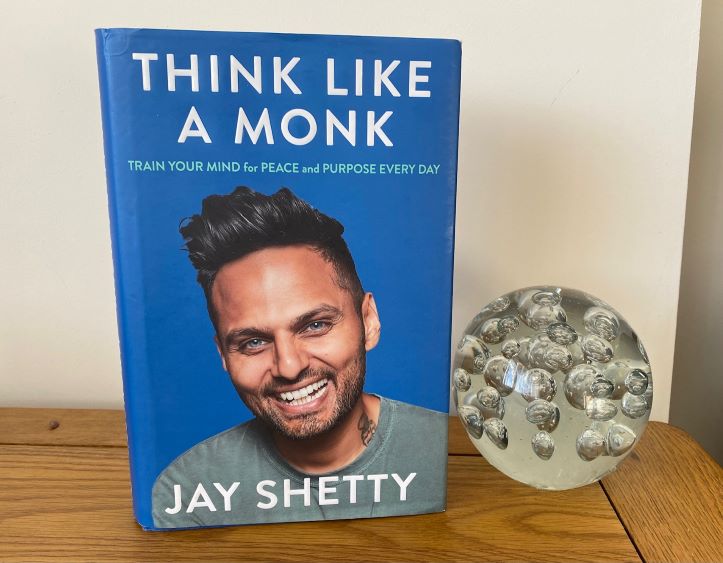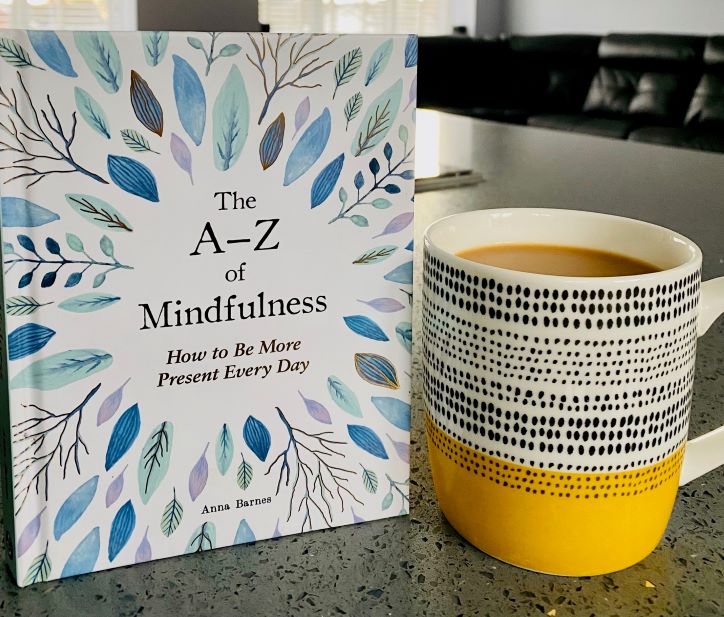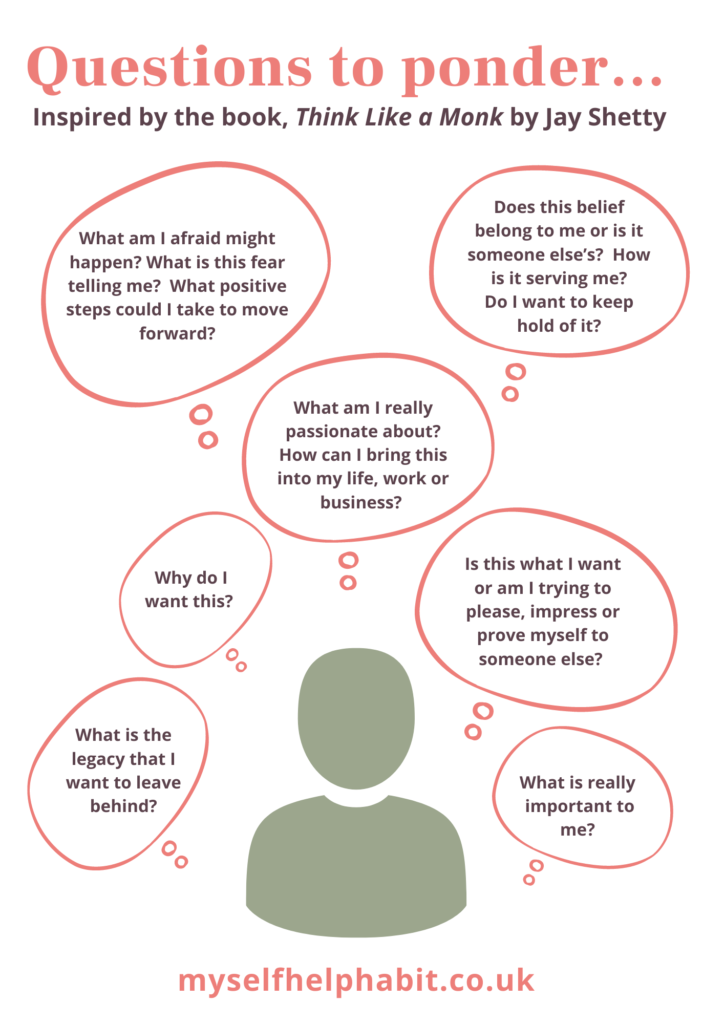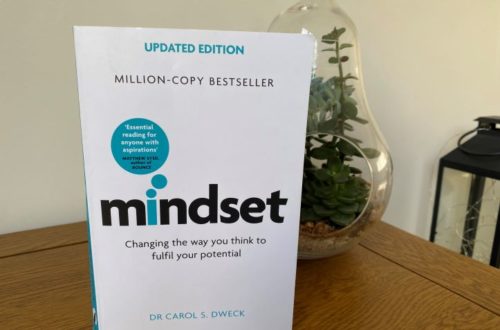
How can thinking like a monk improve your life and career?
Review of Think Like a Monk: Train your mind for peace and purpose every day by Jay Shetty (2020, Thorsons, 352 pages)
As I have been aiming to create more ‘zen’ in my life through daily meditation and mindfulness, I have become increasingly curious about the underlying philosophy behind such practices. This is why I was initially drawn to Jay Shetty’s book, Think Like a Monk*, which promises to teach us how to move away from the preoccupied, fearful and ego-driven ‘monkey mind’ and to step into the monk mindset which, in contrast, is calm, focused, purposeful and service-driven.
*Disclosure: If you buy books linked to my site, I may earn a commission from Bookshop.org, whose fees support independent bookshops.
After studying at a London business school, Shetty defied all expectations by turning his back on the corporate world and joining an ashram in Mumbai. In the process of becoming a monk, he got a whole new outlook on life and decided to share all that he had learned from this experience with the wider world. He now has a popular podcast called On Purpose and a huge following on social media. This, of course, has attracted criticism since, with his celebrity status, some feel that he is not being entirely authentic in writing this book!
That aside, if, like me, you are just beginning to explore and appreciate the glorious wisdom of practices like meditation and mindfulness, and are still very much on your journey of self-discovery, then this book holds many insightful lessons, exercises and meditations that you can take away and apply. Each chapter contains thought provoking quotes and extracts from ancient texts (such as the Bhagavad Gita), showing how relevant they still are today, as well as excerpts and teachings from Shetty’s experience of being a monk.
In this post I will share some of the guidance that I found to be particularly noteworthy from my reading of Think Like a Monk. However, this is really just a snippet of all the ageless wisdom contained within the book! It also has advice on building healthier habits and routines, how to make gradual and sustainable changes in your life, how to restore your confidence after setbacks, and identifying and investing your energy in the relationships that are right for you.
There is also a FREE download at the end of the post which includes some questions that you can take away to help you maintain that monk mindset!
Uncovering your authentic self
This is about getting beyond the people pleasing, the daily pretences, living up to other’s expectations, and being more discerning about the things in life that we are chasing. Amongst the busyness of daily life, the multiple roles we play, and the external influences around us we can become so out of touch with who we are. So, how do we begin to find ourselves again? Shetty suggests that we give ourselves space to be alone with our thoughts (journaling is great for this!), try new experiences, and start doing the things that we love to do.
He also instructs us to take a closer look at the values we live by and the goals we have set and then ask ourselves a rather challenging question:
Are they really mine?
Taking time to uncover your core values, and the goals that belong to you, helps you to live more authentically since you will not be so easily swayed by those outside influences that tell you what you should think, do and be. You can then make decisions and take actions that align with what is really important to you and what you want to achieve. Shetty advises that we should ask ourselves why we want something several times to get to the deeper and more meaningful reason behind each of our goals.
Beware of the ego!
Another vital thing to bear in mind, especially when we are exploring who we really are, is the influence and interference from our own ego which can drive so many of our thoughts and behaviours. Shetty describes this as the part of us that:
craves recognition, acknowledgement, praise, to be right, to be more, to put others down and to raise us up.
Think Like a Monk by Jay Shetty, p.175
Shetty warns us to be conscious of what we attach to our identity (and our idea of happiness) such as how good or bad we are at something, our material possessions, how we look, our achievements, and where we are in our lives, because of how incredibly tenuous this can all be. One minute you are up and the next you are down depending on who or what you are comparing yourself to!
Shetty encourages us to release our sense of self-worth from such attachments, to drop the façade and focus on being ourselves:
Reflect on the you who emerges when nobody else is around, no one to impress, no one with something to offer you. That is a glimpse into who you truly are.
Think Like a Monk by Jay Shetty, p.175
I think the chapter on Ego is a particularly useful one to return to now and again as a reminder to recognise when the ego is at play and to be curious about that. Thankfully, Shetty includes a few practices that help to keep the ego in check!
Aligning with your dharma
I’m sure that many of us have experienced those feelings of boredom, frustration and unfulfillment while being in a job that does not really light us up anymore (or perhaps never did!) So, what can we do when we want to make a move in our careers but we don’t know what we want to do next? The answer lies in our dharma! As Shetty explains, this is like our true ‘calling’ and you know you are living it:
when your natural talents and passions (your varna) connect with what the universe needs (seva).
Think Like a Monk by Jay Shetty, pp.94-95
So, we need to start paying close attention to what we are really passionate about and what we are good at, with the aim of combining the two. Although it can take some time, reflection and experimentation to figure this out, Shetty includes some useful exercises to help you on your way. You can take a Vedic Personality Test to point you towards the skills and qualities that come naturally to you. Alongside this, there are questions that prompt you to observe and assess how much you enjoy the daily activities that you undertake.
This leads to another important element to consider:
Does your passion align with something other people want or need (and are willing to pay for or fund)?
If it becomes apparent that this isn’t the case, Shetty suggests that we can look for other ways to serve in our dharma or we can simply keep our passion as a hobby/interest and then explore other options.
Shetty does take into account that you may not be in a position to just give up your day job to follow your dharma and therefore suggests how you can start to make things happen! This could be through the types of projects you get involved in, taking on a different set of duties at work, taking up volunteering, and making space in your day to pursue your interests (even if only for a few minutes).
Addressing negativity and fear
Shetty’s chapter on Negativity not only highlights the fact that we are surrounded by it (for example, through our exposure to the media and our daily interactions with others) but also urges us to consider how much we contribute to it! To do this we need to become aware of the negative remarks that we think and say (no matter how small and insignificant they may at first seem…) and then observe how they impact our feelings and actions.
Shetty suggests that you keep a tally of every time you complain, compare, criticise or make some other negative comment. The aim of this activity is to raise your awareness of any negative thinking habits that you have and to consciously and gradually reduce them. To facilitate this, Shetty includes lots of advice to help you get a handle on negativity including compassionately questioning your thoughts, clearly identifying your feelings, learning to forgive, and dealing with anger, envy and comparison.
As well as telling us how to manage the negativity that is within and around us, Shetty also shows us how to harness our fears. He reminds us that fear is not necessarily a bad thing, it is how we respond to it that counts:
Fear motivates us. Sometimes it motivates us toward what we want, but sometimes, if we aren’t careful, it limits us with what we think will keep us safe.
Think Like a Monk by Jay Shetty, p.64
Instead of fighting or denying your fears, Shetty asks you to face them and includes exercises that will enable you to get to the root of what your fears are really about. He encourages you to accept that the fear is there, to hear it out, and take time to understand where and why it shows up. He also suggests that you see fear as a teacher. It could, for example, be pointing you towards the inner work that needs to be done or bringing your attention to something that you really care about. It can help to spur you on, making you take positive actions and directing you to other, more meaningful opportunities in life.
Maintain your monk mindset




